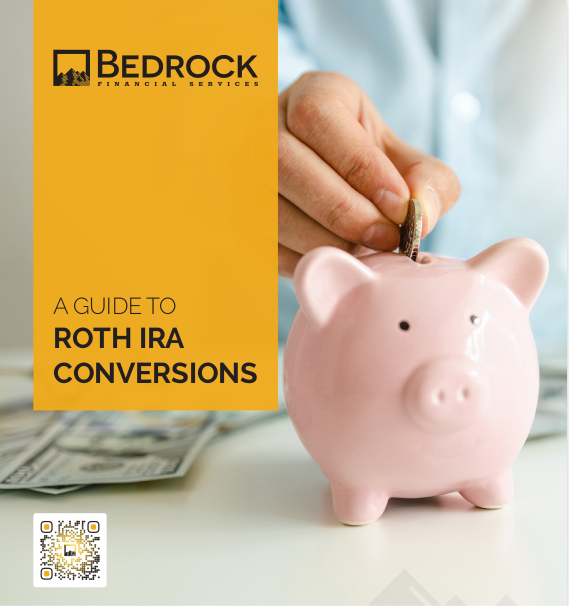Key Takeaways
-
Direct mail is still a viable marketing channel for financial advisors in 2025, but it requires more data, personalization, and integration with digital tools than in previous decades.
-
Advisors who modernize their direct mail strategy with better targeting, follow-up systems, and multichannel support tend to see significantly better ROI.
Why Direct Mail Still Works—If You Make It Work
In 2025, digital platforms dominate the marketing space, yet direct mail maintains a unique place in your outreach strategy. You’re not imagining it: response rates for direct mail remain higher than many forms of digital advertising when executed properly. But relying on the same postcard designs or retirement seminar flyers you used in 2010 no longer cuts it.
What’s changed isn’t the medium—it’s the expectations. Today’s prospects demand higher relevance, stronger follow-up, and less friction in their decision-making process. So, if you’re still sending out generic mailers without a system behind them, you’re likely wasting money.
The Role of Data in 2025 Direct Mail Campaigns
Success now begins with smarter targeting. Modern direct mail requires:
-
Data enrichment: You need more than addresses. Layer in retirement eligibility, job title, homeownership status, and household income data.
-
Segmentation: Create campaigns tailored to subgroups, such as federal employees within five years of retirement or high-income postal workers.
-
Timing: Coordinate your campaigns around important dates like birthdays, retirement anniversaries, or seasonal benefits deadlines.
You’re no longer mailing to a ZIP code—you’re mailing to a need.
Personalization Is Non-Negotiable
Gone are the days of bulk, impersonal mailers. In 2025, prospects are trained to ignore generic outreach. Personalization increases engagement significantly and should include:
-
Name and job role: Use variable printing to personalize by name and relevant career titles (e.g., “John, are you optimizing your FERS benefits?”).
-
Relevant visuals: Include images that reflect their profession or stage in life.
-
Localized offers: Mention their city or region, such as upcoming events or consultations nearby.
If it doesn’t feel custom, it gets tossed.
Smarter Mail Design Choices That Reflect Today’s Standards
Visual clutter and dated design cues are red flags to a modern audience. To meet today’s expectations:
-
Use clean, minimal layouts
-
Include a strong call to action (CTA) that leads into a digital experience
-
Avoid gimmicks, fonts from 2010, or overly corporate stock imagery
Your layout should feel as professional and modern as your website or social profiles. Consistency builds trust.
Integration with Digital Systems Is Mandatory
In 2010, direct mail could work on its own. In 2025, that’s no longer realistic. To be effective, your campaigns must be integrated with your broader marketing ecosystem:
-
QR codes or personalized URLs (PURLs): Drive readers to a custom landing page for your seminar or lead magnet.
-
CRM tracking: Record interactions and sync mailing responses into your pipeline.
-
Automated email sequences: Trigger a follow-up email series for those who scan, RSVP, or respond.
This integration transforms direct mail from a one-off attempt into part of a multi-touch journey.
Cost Efficiency in the Current Landscape
Mailing costs have increased since 2010, but that doesn’t mean direct mail is unaffordable. It just means every piece you send must be smarter. In today’s climate:
-
The average cost per mailed piece has risen 20% over the last five years.
-
Higher postal rates and printing expenses require you to narrow your audience.
-
Smaller but more targeted lists outperform larger, spray-and-pray efforts.
You’re better off mailing to 1,000 qualified contacts than 10,000 unknowns.
Compliance and Ethical Messaging
In 2025, compliance regulations have tightened. Whether you’re working with public sector employees or retirees, your messaging must adhere to these standards:
-
Avoid misleading terms like “guaranteed income” without proper explanation.
-
Ensure your mailers include proper disclosures if discussing retirement benefits.
-
Use language that educates, not manipulates.
Prospects can easily verify or flag misleading content—so transparency is not only ethical, it’s strategic.
Stronger CTAs and Conversion Paths
It’s no longer enough to say “Call me.” Today’s successful mailers:
-
Provide a next-step that feels low risk, like downloading a checklist or registering for a webinar.
-
Include multiple response methods: scan, text, or visit.
-
Offer value before the pitch.
In a cluttered mailbox, your CTA must stand out with clarity and purpose.
Rethinking Frequency and Campaign Cadence
In the past, a single quarterly mailing may have seemed sufficient. But modern marketing requires sustained visibility. A strong direct mail strategy now includes:
-
A quarterly mailing rhythm aligned with the seasons or benefit enrollment windows
-
Reminder mailers sent within 7–10 days of initial outreach
-
Integration with email follow-ups and social retargeting
It’s not about bombarding—it’s about staying visible long enough to be remembered when the prospect is ready.
Best Practices for Tracking Results in 2025
Direct mail success is now quantifiable. You should be tracking:
-
Response rate by list segment and campaign type
-
Cost per qualified lead (CPL)
-
Conversion rates from mailer to appointment
-
Engagement with digital components (QR code scans, page visits, opt-ins)
This data helps you refine future mailers, drop underperforming segments, and justify your spend to yourself or your team.
Use Direct Mail to Support Event Marketing
Live seminars, webinars, and consultations remain a key part of your client acquisition funnel. Direct mail in 2025 is an excellent tool for promoting these touchpoints:
-
Send save-the-dates and RSVP prompts 3–4 weeks in advance
-
Follow up with event reminders and handouts mailed to attendees
-
Use mail to re-engage no-shows with a second CTA
You’re not just inviting them to an event—you’re beginning a process.
When Direct Mail Works Best in 2025
Direct mail performs well when:
-
You’re targeting an older demographic that still values tangible communication
-
You’re promoting time-sensitive offers like benefits deadlines
-
Your market is oversaturated digitally, and physical mail provides novelty
-
You’ve already made digital contact and want to reinforce your presence offline
It’s not an all-purpose tool, but it’s an exceptional one for the right job.
Aligning Your Message with Federal Employee Needs
For advisors working with federal employees, direct mail should reflect the specific stages and questions these professionals face:
-
Are they approaching their Minimum Retirement Age?
-
Do they understand their FERS annuity calculation?
-
Are they maximizing their TSP contributions before separation?
Messaging that answers these questions earns attention because it feels relevant and personalized. Generic retirement language will likely get ignored.
Why You Still Need a Follow-Up Strategy
Direct mail is only the first step. Without a coordinated follow-up plan, your response rate drops drastically. Make sure to:
-
Set up a call or email within 48–72 hours of expected delivery
-
Retarget responders via digital ads or email
-
Include mail responders in your drip sequences and CRM pipelines
Without follow-up, you’re leaving responses (and revenue) on the table.
Your Direct Mail Plan Should Evolve in Quarters, Not Years
It’s not wise to lock into one mailer format or list for an entire year. Marketing agility is key in 2025. Review your campaigns every quarter:
-
What audience segments underperformed?
-
Which design or CTA had the highest response rate?
-
What follow-up tactics led to the most conversions?
With each quarter, your direct mail becomes more efficient—and more valuable.
Why a Modern Direct Mail Strategy Puts You Ahead
Advisors who treat direct mail as a modern tool rather than an outdated relic are securing more consultations and winning over clients who would ignore yet another Facebook ad. The channel is far from dead. It just needs better tools, better timing, and a better message.
If you’re still sending the same mailers you did five or ten years ago, it’s time for an upgrade. But if you’re ready to evolve, direct mail can still open doors no digital campaign ever could.
Build Smarter Campaigns with Support Behind You
You don’t have to reinvent the wheel to improve your direct mail performance. With the right resources, you can:
-
Target smarter using better data
-
Design pieces that convert
-
Connect mailers to digital systems
-
Track performance in real time
At Bedrock Financial Services, we help professionals like you modernize outdated strategies and implement campaigns that are aligned with how today’s prospects actually behave. If you’re ready to put more power behind your mailers, sign up with us and let’s work together to build campaigns that deliver results.







